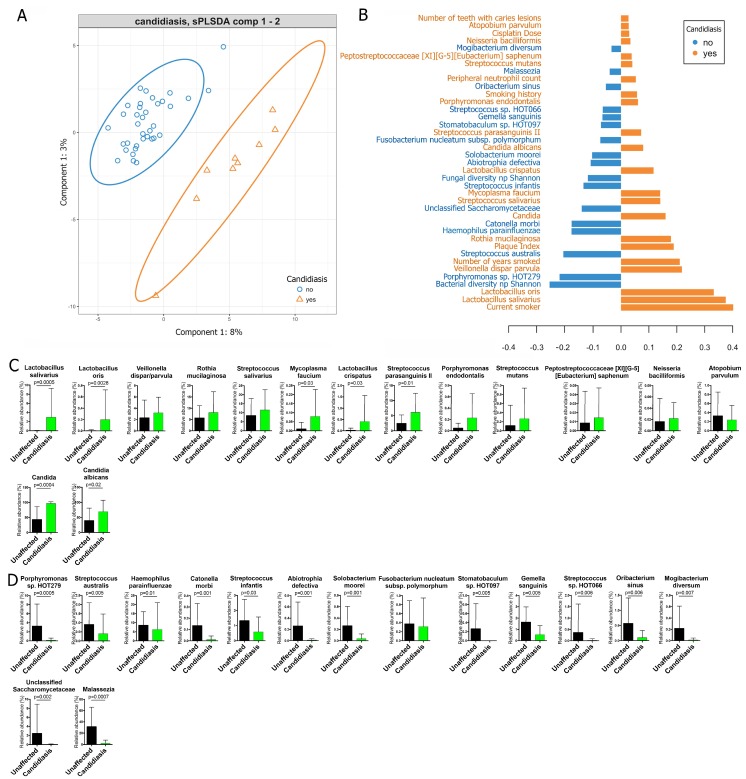Figure 1.
Multivariate sparse partial least square discriminant analysis (sPLS-DA) to identify baseline variables that are able to differentiate subjects that later developed oral candidiasis during chemotherapy (n = 9) from those that remained candidiasis-free (n = 36). (A) Separation of subjects that tested positive and negative for oral candidiasis, according to the sPLS-DA model. (B) Variables with their loadings contributing to component 1, which best separated subjects based on an oral candidiasis diagnosis. All baseline variables measured were taken into account in the analysis, including demographic, medical, oral-health, and neutrophil characteristics, bacterial and Candida burdens, microbiome diversity, and the proportions of microbiome taxa present in at least 10% of subjects. (C) The baseline proportions of bacterial (1st row) and fungal (2nd row) taxa, identified in the sPLS-DA model as ‘increased’ in subjects that later developed oral candidiasis. (D) The baseline proportions of bacterial (1st row) and fungal (2nd row) taxa, identified by the sPLS-DA model as ‘increased’ in the unaffected subjects. p values (unadjusted) shown in C and D are those that were significant after comparing the proportions via Mann–Whitney rank tests.

